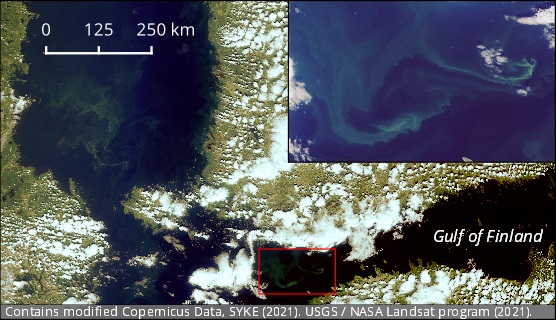Cyanobacterial blooms decrease in sea, lakes
Published : 07 Aug 2021, 01:54
The number of cyanobacterial observations has started to decline in inland waters and on the coasts of the Baltic Sea, said the Finnish Environment Institute (SYKE).
The situation in inland waters is calmer than usual. Usually, August is the month when cyanobacteria is most abundant.
In the open sea areas, conditions have calmed down after a windy weekend. In the past week, the mass centres of the cyanobacterial occurrences in the Bothnian Sea and at the mouth of the Gulf of Finland have moved away from Finland.
The national cyanobacterial monitoring is based on the monitoring of cyanobacterial deposits in surface water, and the intention is to provide an overview of the cyanobacterial situation in different water bodies.
Observations are carried out as part of the monitoring of the state of the environment in cooperation with the Centres for Economic Development, Transport and the Environment, municipal environmental and health authorities and the Finnish Environment Institute. Finnish Rotary Clubs are also actively involved in nationwide cyanobacterial monitoring.
This summer, cyanobacterial monitoring includes about 400 permanent observation sites across the country on inland and coastal waters and in the archipelago.
The Finnish Environment Institute usually reports on the national cyanobacterial situation on a weekly basis every Thursday from the beginning of June until the end of August. The weekly algal reporting on the national cyanobacterial monitoring was launched in 1998.


